Fix Windows Module Installer Worker High CPU Usage
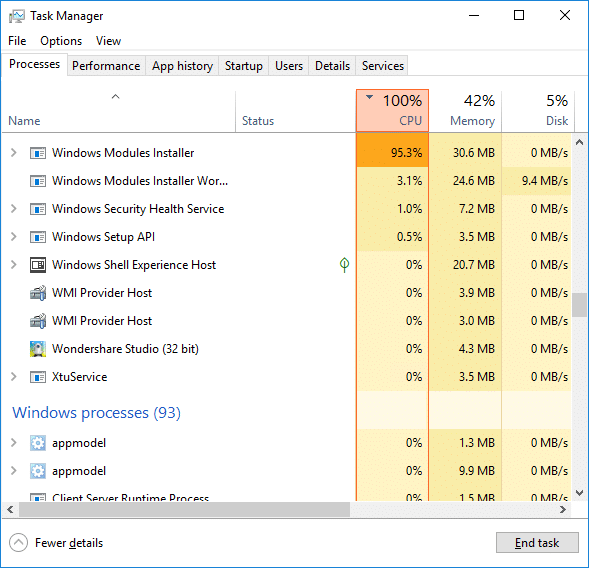
If you are facing the High CPU Usage by Windows Modules Installer Worker, then don’t worry as thousands of other users are also facing the similar problem and therefore, there are many working fixes which we will be discussing today in this article. To verify if you are facing this issue open Task Manager (Ctrl + Shift + Esc) and you will find that the Windows Modules Installer Worker is consuming High CPU or Disk Usage.

Pro Tip: You may leave your PC overnight or for a few hours to see the issue rectify itself once the Windows is finished downloading and installing updates.
What is Windows Modules Installer worker (WMIW)?
Windows Modules Installer worker (WMIW) is a service which takes cares of automatically installing Windows Update. According to its service description, WMIW is a system process that enables automatic installation, modification, and removal of Windows updates and optional components.
This process is responsible for finding new Windows Update automatically and installing them. As you might be aware that Windows 10 automatically install newer builds (i.e. 1803 etc.) via Windows Updates, so this process is responsible for installing these updates in the background.
Although this process is called Windows Modules Installer worker (WMIW) and you will see the same name in the Processes tab in the Task Manager, but if you switch to Details tab, then you will find the name of the file as TiWorker.exe.
Why Is Windows Modules Installer worker Using So Much CPU?
As Windows Modules Installer worker (TiWorker.exe) runs continuously in the background, sometimes it might utilize high CPU or disk usage when installing or uninstalling Windows Updates. But if its constantly using high CPU then the Windows Modules Installer worker may have become unresponsive while checking new updates. As a result, you may be experiencing lags, or your system might hang or freeze completely.
The first thing users do when they experience freezing, or lagging issues on their system is to restart their PC, but I assure you that this strategy won’t work in this case. This is because the issue will not resolve by itself until and unless you fix the underlying cause.
Fix Windows Module Installer Worker High CPU Usage
Pastikeun nyieun titik pamulihan upami aya anu salah.
Windows Modules Installer Worker (WMIW) is an important service, and it should not be disabled. WMIW or TiWorker.exe is not a virus or malware, and you cannot just delete this service from your PC. So without wasting any time let’s see How to Fix Windows Modules Installer Worker High CPU Usage kalayan bantuan pituduh ngungkulan anu didaptarkeun di handap ieu.
Métode 1: Jalankeun Windows Update Troubleshooter
1. Pencét Windows Key + I pikeun muka setélan teras klik Ikon Update & Kaamanan.
![]()
2. Tina ménu kénca-leungeun, pilih Troubleshoot handapeun "Kéngingkeun sareng jalan” klik dina Update Windows.

3. Ayeuna pencét dina "Ngajalankeun troubleshooter nu"dina Windows Update.
4. Let the troubleshooter run, and it will automatically fix any issues found with Windows Update taking forever.
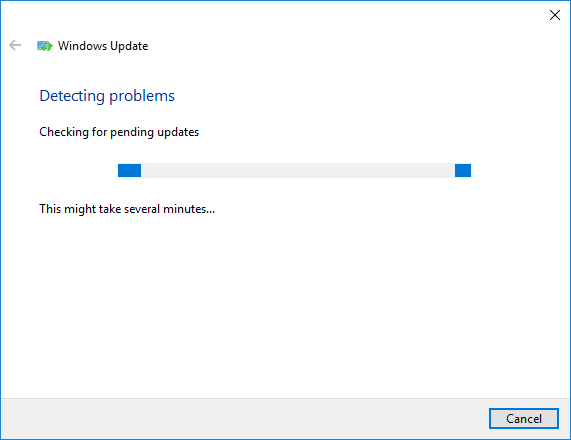
Method 2: Manually Check for Windows Updates
1. Pencét Windows Key + I lajeng pilih Ngamutahirkeun & Kaamanan.
2. Ti sisi kénca-leungeun, menu clicks on Update Windows.
3. Ayeuna klik dina "Mariksa apdet"Tombol pikeun mariksa apdet anu sayogi.

4. Upami aya apdet anu ngantosan, teras klik Unduh & Pasang apdet.

5. Sakali apdet diundeur, install aranjeunna, sarta Windows anjeun bakal jadi up-to-date.
Method 3: Configure Windows Update to Manual
Awas: This method will switch Windows Update from automatically installing the new updates to the manual. This means you have to manually check for Windows Update (weekly or monthly) to keep your PC secure. But follow this method, and you can again set the Updates to Automatic once the issue is resolved.
1.Pencét Windows Key + R lajeng ngetik services.msc sarta pencét Lebetkeun.

2. Scroll down and find Windows modul Installer service in the list.
3. Pencét-katuhu dina Windows Modules Installer service tur pilih Sipat.
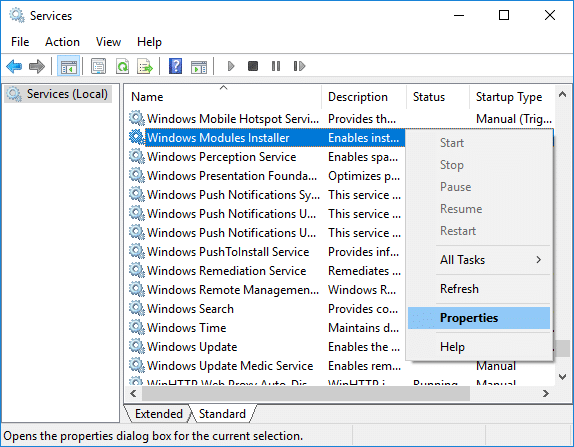
4. Ayeuna pencét dina Eureun then from the tipe ngamimitian drop-down select Pitunjuk.
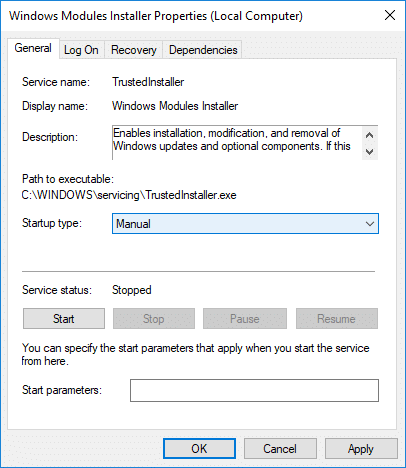
5. Klik Larapkeun, dituturkeun ku OK.
6. Similarly, follow the same step for the Windows Update service.

7. Reboot PC Anjeun pikeun nyimpen parobahanana.
8. Deui pariksa keur Windows Updates Manually tur masang sagala apdet pending.
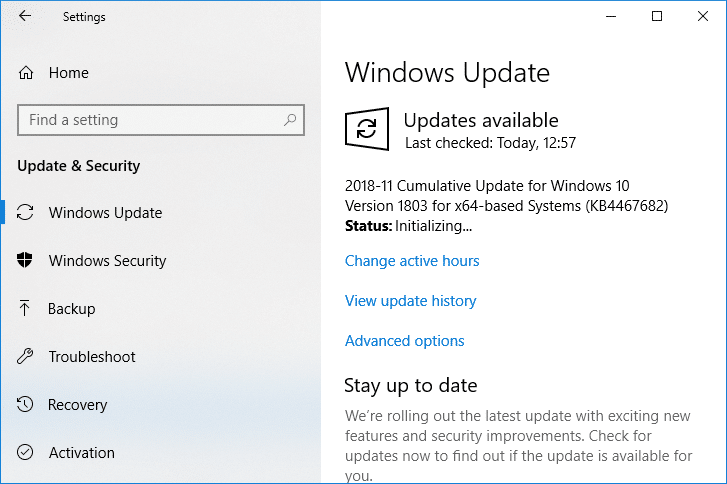
9. Once is done, again go back to services.msc window and open the Windows Modules Installer & Windows Update Properties jandela.
10. Setél na tipe ngamimitian ka otomatis teras klik ngamimitian. Then click Apply followed by OK.
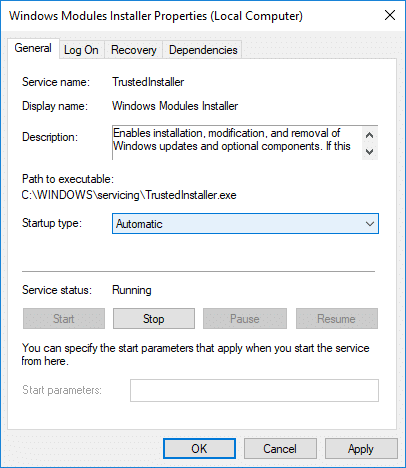
11. Reboot PC Anjeun pikeun nyimpen parobahanana.
Métode 4: Jalankeun Troubleshooter Pangropéa Sistem
1. Pencét Windows Key + R lajeng ngetik kontrol jeung pencét Enter pikeun muka Panél Kontrol.

2. Pilarian Troubleshoot teras klik dina Pamérésan masalah.

3. Teras, pencét dina tempo sadaya dina jandela kénca.
4. Klik “System Maintenance” ngaji teh System Maintenance Troubleshooter.

5. The Troubleshooter meureun bisa Fix Windows Modules Installer Worker High CPU Usage, but if it didn’t, then you need to run System Performance Troubleshooter.
6. Buka Komando Ajakan. Pamaké tiasa ngalakukeun léngkah ieu ku milarian 'cmd' lajeng mencet Lebetkeun.

7. Ketik paréntah di handap ieu kana cmd teras pencét Lebetkeun:
msdt.exe / id PerformanceDiagnostic
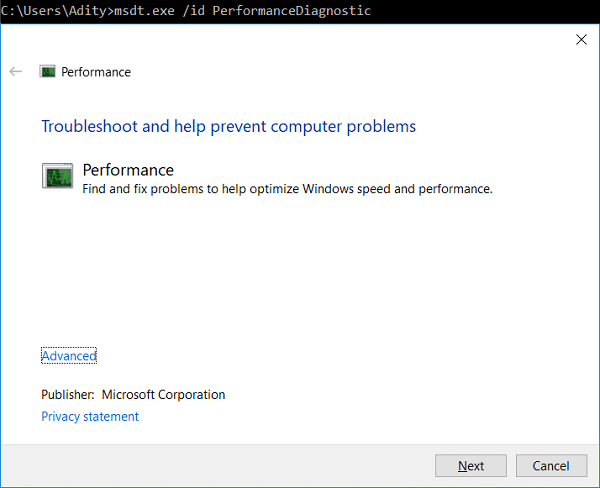
8. Follow the on-screen instruction to run the troubleshooter and fix any issues find the System.
9. Finally, exit the cmd and reboot your PC.
Method 5: Disable Automatic Maintenance
Sometimes Automatic Maintenance can conflict with the Windows Modules Installer Worker service, so try to disable Automatic Maintenance using this guide and see if this fixes your issue.
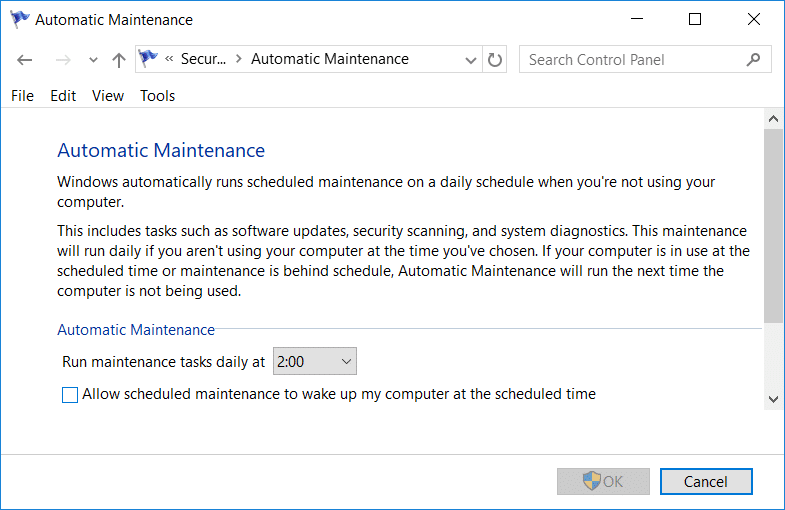
Although disabling Automatic Maintenance is not a good idea, but there might be some case where you need to actually disable it, for example, if your PC freezes during automatic maintenance or Windows Modules Installer Worker High CPU Usage issue then you should disable maintenance to troubleshoot the issue.
Method 6: Run System File Checker and DISM
1. Buka Komando Ajakan. Pamaké tiasa ngalakukeun léngkah ieu ku milarian 'cmd' lajeng mencet Lebetkeun.
2.Now ngetik di handap dina cmd teras pencét asupkeun:
Sfc /scannow sfc /scannow /offbootdir=c: /offwindir=c:windows (Upami di luhur gagal teras cobian ieu)

3. Ngadagoan prosés di luhur nepi ka rengse tur sakali rengse, balikan deui PC Anjeun.
4. Buka deui cmd sareng ketik paréntah di handap ieu sareng pencét énter saatos masing-masing:
Dism /Online /Cleanup-Image /CheckHealth Dism /Online /Cleanup-Image /ScanHealth Dism /Online /Cleanup-Image /RestoreHealth

5. Hayu paréntah DISM ngajalankeun sarta antosan nepi ka rengse.
6. Upami paréntah di luhur henteu jalan, teras cobian di handap:
Dism / Gambar: C: offline / Cleanup-Image / RestoreHealth / Sumber: c: testmountwindows Dism / Online / Cleanup-Image / RestoreHealth / Sumber: c: testmountwindows / LimitAccess
Catetan: Ganti C: RepairSourceWindows sareng sumber perbaikan anjeun (Instalasi Windows atanapi Disc Pamulihan).
7. Reboot PC Anjeun pikeun nyimpen parobahanana tur tingal lamun anjeun bisa Fix Windows Modules Installer Worker High CPU Usage.
Métode 7: Laksanakeun Boot Beresih
Sometimes 3rd party software can conflict with Windows and can cause the issue. To Fix Windows Modules Installer Worker High CPU Usage issue, Anjeun kudu ngalakukeun boot bersih dina PC Anjeun tur nangtukeun jenis panyakitna masalah step by step.
Method 8: Set your WiFi as Metered Connection
Catetan: This will stop Windows Automatic Update, and you will need to manually check for Updates.
1. Pencét Windows Key + I pikeun muka setélan teras klik Jaringan & Internét.

2. Tina ménu kénca-leungeun, pilih Wi-fi
3. Under Wi-Fi, malik on your currently connected network (WiFi).
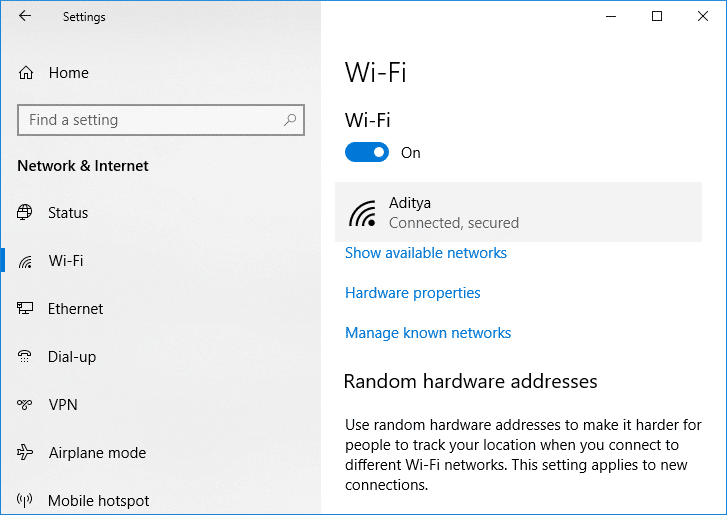
4. Scroll down to Metered connection and aktipkeun toggle handapeun "Tetep sambungan sakumaha metered".
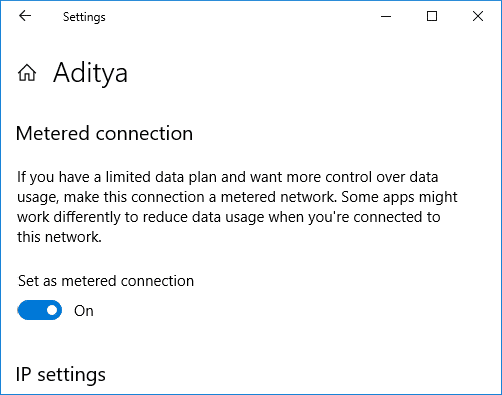
5. Close Settings and reboot your PC to save changes.
disarankeun:
Éta éta, anjeun parantos suksés Fix Windows Module Installer Worker High CPU Usage tapi upami anjeun masih gaduh patarosan ngeunaan tutorial ieu, punten naroskeun aranjeunna dina bagian koméntar.
